The North in May 2022 – A turning of the tide
Fearghal Mac Bhloscaidh
An Analysis of Sinn Féin’s recent electoral success in #AE22
If the history of the nationalist community in the north is analysed across the longue durée, there are clear trends. At the most basic level, a single community or the ‘northern nationalists’ did not exist. You can identify three general groups – Catholics, nationalists and republicans – let’s call them thirds for handiness, but this is not a mathematical descriptor. Catholics were the small middle class, clergy and devotees who followed them. Readers of this blog can’t tolerate another definition of republicanism, but the republican grouping in the north emerged from a largely working-class and politically conscious community. Then, the most significant third were the nationalists, mostly poor people of Catholic background who suffered because of the system and who would support anyone prepared to apparently fight their corner.
John Hume’s greatest skill was that he acted as a weathervane for this group and directed SDLP policy accordingly. He was able to handle nationalist politics so that the nationalist third acted as electoral ballast for the Catholic third – in the early 70s and in the era of hunger strikes he faltered for a spell largely because of British intransigence and violence. You can give numerous examples of his acumen – his opposition to internment, his emphasis on the Council of Ireland in Sunnningdale, his input to the Anglo-Irish Agreement – all of which contained support for militant republicanism largely to the republican third.
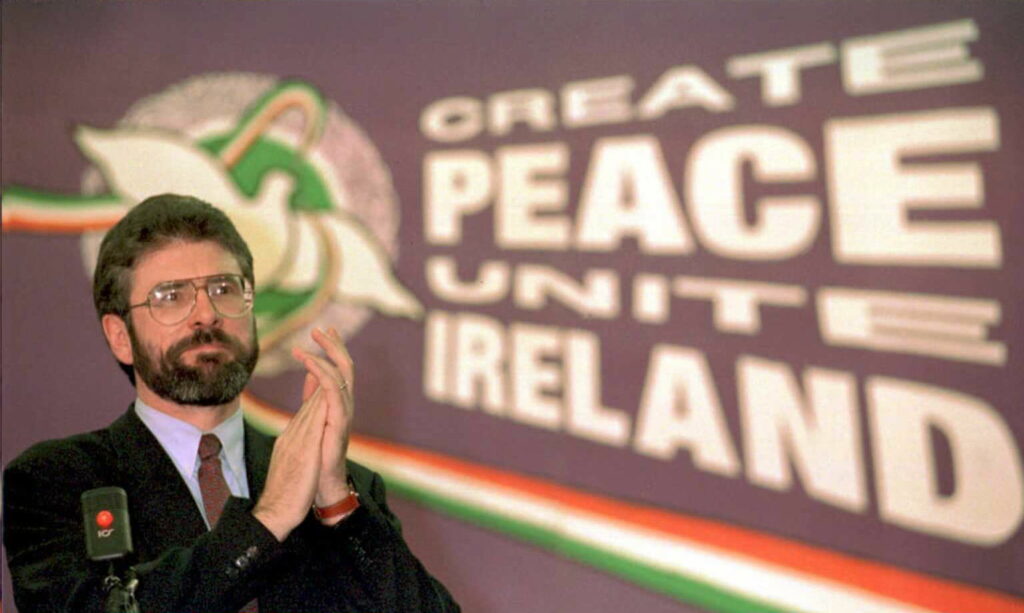
The formula
Gerry Adams’ greatest skill was that he understood John Hume’s formula. If the Provos ended their campaign, Sinn Féin would consume the nationalist third and that’s what it did. Danny Morrison called the armed struggle an electoral glass ceiling at the time. But the price of this was that the Provisional movement abandoned the fundamental principles of republicanism and accepted constitutionalism. Trimble said in 1998 that they would have to “house train” Sinn Féin. Until 2016, SF operated as a greener version of the SDLP or the Stoops, with an army of volunteers built for nationalist electoral triumph. Hume knew that the Catholic third wouldn’t go anywhere while he managed the nationalist third. Similarly, the Shinners assumed that the Republican third wouldn’t go anywhere as they courted the nationalist third – a trick that they shared with their new friends in New Labour. Looking at the Stormont results from 1998 to 2016, Sinn Féin clearly captured the nationalist third from the SDLP. Nevertheless, the turn-out in these elections fell from 69.8% in 1998 to 54.9% in 2016, when Arlene danced with glee at the DUP Conference. After spending nearly seven years implementing austerity and abandoning the republican working class, the Sinn Féin vote fell from 180,573 in 2007 to 166,785 in 2016 and People Before Profit won two quotas in West Belfast – the Provos cradle and heartland.
Gerry Adams’ greatest skill was that he understood John Hume’s formula. If the Provos ended their campaign, Sinn Féin would consume the nationalist third and that’s what it did.
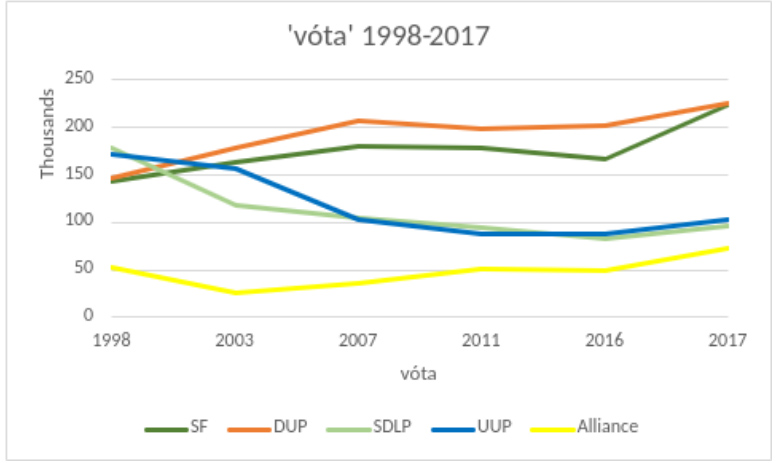
A stagnating strategy
Sinn Féin and their strategy up to 2016 stagnated – Casement Park, austerity, privatisation, PPI, destruction of the NHS but above all they accepted that neo-liberalism could not be challenged. Furthermore, of course, despite the economic crisis in 2008 the “strategy” in the south appeared equally moribund as SF earned 13.8% of the general election vote in 2016. SF didn’t even field enough candidates in 2020, but the fact that every other left-leaning opposition party had acted as a FF-FG mud guard and that in Mary Lou and Eoin Ó Broin SF have two of the best politicians anywhere meant that SF reaped the FF-FG whirlwind.
The ‘Dream Dearg’ moment
In the meantime, however, the DUP committed political suicide! They continued to insult the nationalist community and resist social change as they wallowed in a cesspool of corruption – Red Sky and Nelson, Iris eating sausages in the lockkeeper’s cottage, Ian Óg flitting between developers and global dictators, Peter the Punt and the Isle of Mann etc. Then came RHI and to add insult to injury Paul Givan removed the Líofa grant and the Shinners had to pull out of the sectarian circus in Stormont to rescue themselves. Then, in the run up to the election, Arlene came out with the crocodile line – you couldn’t make it up!

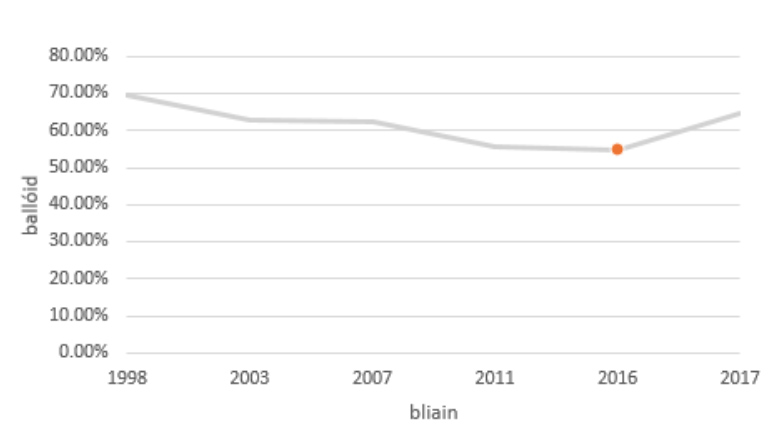
A Sinn Féin Surge
Thus, the SF vote jumped for the first time since 1998. Indeed, 10% more came out to vote and nationalists [yes them ones again and republicans as well because the Shinners grew a pair and challenged the DUP for the first time in a generation] came out for the first time in two decades because they were “dearg le fearg”. Where have I heard that before!? See the spot in the graph above. In truth, the DUP’s incompetence, inflexibility and iniquity rescued the Shinners because their heinous misbehaviour gave them a chance to untangle the wires – or reset the strategy! Ironically, they can be as radical as they want now because the old world is in the process of dying and a new one taking its place. In my blog, I lamented the bland and rather neutral strategy, stating that SF can now really push for a genuine social democratic future like Corbyn’s appeal in 2017. In terms of the election, however, the First Minister for all, let’s make Stormont work line represented a very skilful [if somewhat cynical] policy.
If we examine the percentage of the different parties again, we’ll see that the first period up to St Andrews lasted til 2006 when Sinn Féin cannibalised the SDLP – leaving only the Catholic third. Then the Shinners got stuck in the sectarian mire. In the first period, the SF vote grew from 142,858 in 1998 to 180,573 in 2007. By 2016, they had lost more than 13,000 votes [166,785] even though the nationalist population was growing. Then, in 2017, they earned more than 57,000 votes or received 224,245!! Arlene received another 20,000 votes from her bile about the crocodile, but it ultimately represented another grave self-inflicted wound.
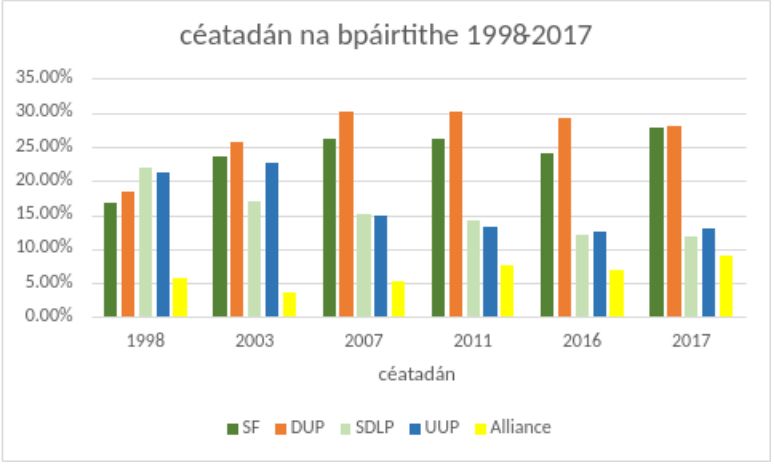
However, the DUP hadn’t finished hitting the self-destruct button. They circled the wagons, beat the Orange drum for the 2019 Westminster election and won the balance of power at Westminster. Arlene made a fool of herself [there wasn’t much work involved] and her MPs made a show of themselves acting as the stumpy tail of the Brexit bulldog. These luddites believed the puppets controlled the masters until Boris threw them under Wrightbus. The protocol, two leaders within one summer – anyone can put their ass on the fire, but the DUP poured petrol on the flames!
Meanwhile, the Shinners won the largest number of votes in the south in the 2020 election, an outcome that surprised themselves more than anyone else – one day a Leinster House laughing stock and a strategic genius the next, Gerry Adams has probably spent the last three years laughing quietly to himself. When the Protocol was agreed I said that the Union was as dead as a door nail, and I was right. After more than 20 years of the Good Friday Agreement, Stormont clearly cannot function as the DUP’s bigoted blockheads have spent a decade trying to hold on to power to fill their own pockets and now threaten any future power sharing unless the British government breaches an international agreement that the Duppers partially engineered in a spasm of hubris and hatred intent on re-imposing a hard border in Ireland. But this ignores the demographic argument – because there aren’t enough bigots left. This year’s census will confirm, if the election hasn’t already, that the Protestant state for the Protestant people is gone and will not return.
This Article is republished by the kind permission of Fearghal Mac Bhloscaidh. You can find his Blog here

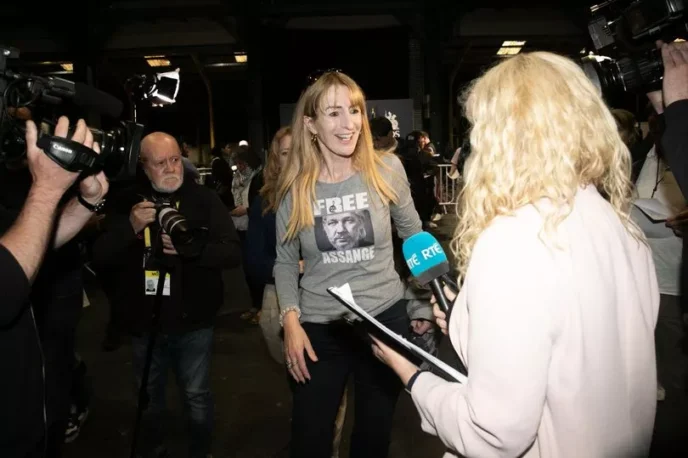
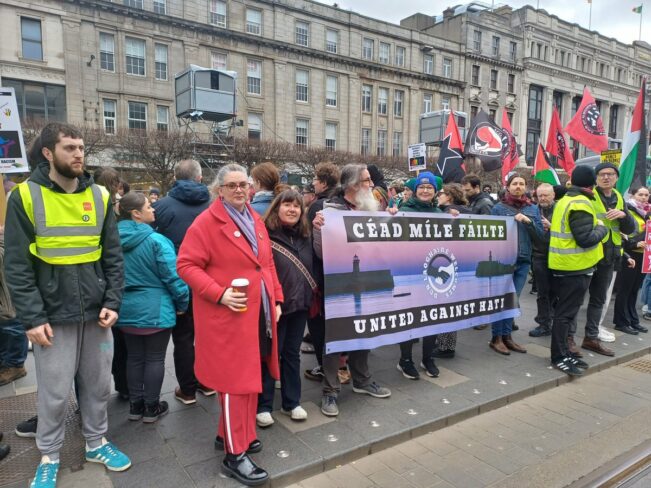


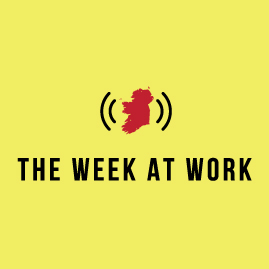



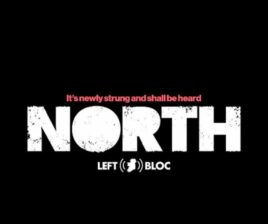

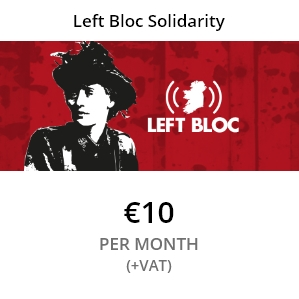
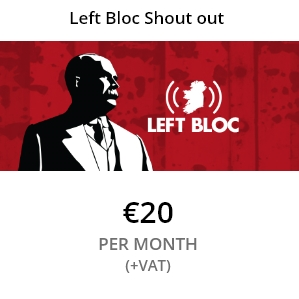
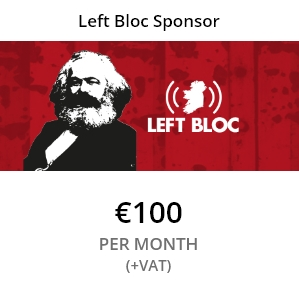
Comments